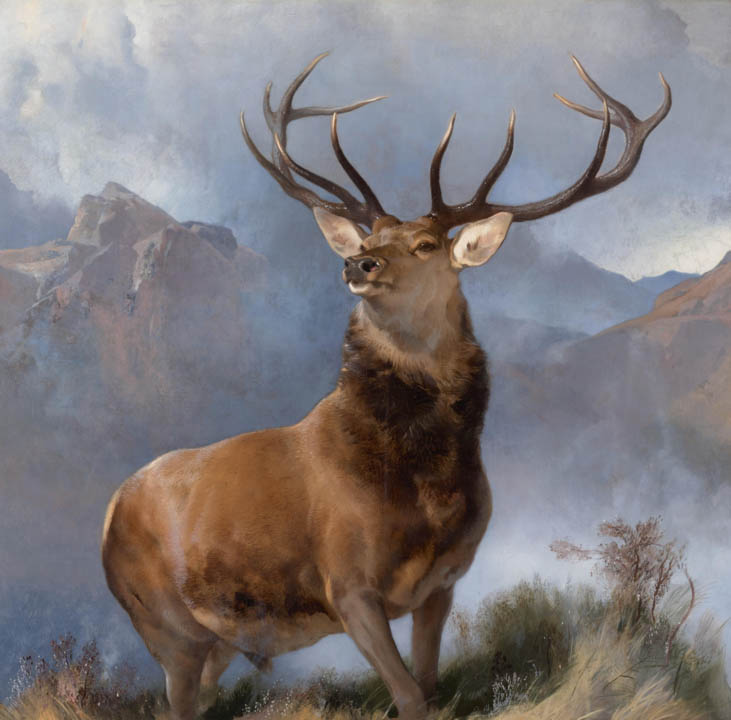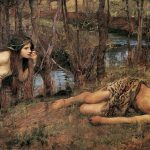
Scotland’s vibrant cultural tapestry is richly embroidered with art that spans centuries and styles, standing as a proud testament to its diverse artistic heritage. Among the rolling hills and bustling cities, numerous art museums showcase the soul and spirit of Scottish and international artistry. This guide aims to walk you through the top 10 art museums across Scotland, each offering a unique glimpse into the world of creativity through their renowned collections, stunning architecture, and immersive visitor experiences. From the iconic National Galleries in Edinburgh to the avant-garde Dundee Contemporary Arts, each museum is a portal to past and present art worlds.
1. National Galleries of Scotland, Edinburgh: The Crown Jewel The National Galleries of Scotland in Edinburgh is a majestic complex that houses some of the most important art collections in the world. Comprising three major galleries – the National Gallery, the Portrait Gallery, and the Gallery of Modern Art – it offers a comprehensive overview of Scottish and international art. The National Gallery showcases a splendid array of works by famous Scottish artists such as Henry Raeburn and Allan Ramsay alongside masterpieces by Titian and Rembrandt. Its grand neoclassical architecture, designed by William Henry Playfair, adds to the allure, making it a must-visit for anyone in Edinburgh.
The Scottish National Portrait Gallery, another jewel in the crown, focuses on the faces that have shaped Scotland’s history from the past to the present. Here, visitors can wander through beautifully curated exhibitions featuring royals, rebels, poets, and philosophers, all captured by the brushes of renowned portrait artists. The gallery’s gothic revival architecture is itself a work of art, providing a fitting backdrop for the stories of Scotland’s most influential figures. Interactive displays and insightful descriptions help to bring these historical characters to life.
Meanwhile, the Scottish National Gallery of Modern Art holds a modern and contemporary art collection that is unrivalled in its breadth and depth. The gallery features works by international icons such as Pablo Picasso, David Hockney, and Andy Warhol, as well as leading Scottish artists like Eduardo Paolozzi and Douglas Gordon. The gallery’s sculpture park, dotted with works by Henry Moore and Barbara Hepworth, offers a serene retreat from the urban hustle and bustle. Regularly changing exhibitions ensure there is always something new to discover.
2. Kelvingrove Art Gallery and Museum, Glasgow: A Victorian Masterpiece Kelvingrove Art Gallery and Museum, housed in an impressive red sandstone building, stands as a landmark of Glasgow’s cultural landscape. Opened in 1901, the museum today hosts a rich variety of exhibits ranging from arms and armor to natural history and Scottish and European artworks. The art collection includes significant works by the Old Masters, French Impressionists, and pioneers of the Glasgow School. This eclectic mix not only highlights the diversity of the museum’s holdings but also reflects the multifaceted nature of Glasgow’s own historical narrative.
One of the most beloved sections showcases works by Scottish artists, including James Guthrie and John Lavery, part of the famed Glasgow Boys. Their vivid, realistic paintings capture the spirit of 19th-century Glasgow, offering insights into the social and cultural milieu of the time. Additionally, the museum’s impressive array of Dutch Renaissance art and Salvador Dali’s iconic “Christ of Saint John of the Cross” provide a juxtaposition of style and era that is both educational and visually stunning. This variety makes Kelvingrove not just a museum, but a vibrant center for historical and artistic exploration.
Kelvingrove is also renowned for its commitment to community engagement and educational programs. It hosts numerous workshops, lectures, and interactive sessions that make art accessible to audiences of all ages and backgrounds. These programs are designed to inspire future generations of artists and art lovers, ensuring the museum’s place at the heart of Glasgow’s cultural community. Moreover, the friendly and knowledgeable staff make each visit a warm and welcoming experience.
The architecture of Kelvingrove itself merits attention, characterized by its elaborate Victorian design and the grandeur of its interior spaces. The museum’s central hall, with its high ceilings and organ, is a popular spot for musical performances, adding an auditory component to the visual feast on display. This architectural masterpiece, combined with its extensive collections, makes Kelvingrove a crucial piece of Scotland’s artistic heritage and a testament to the city’s ongoing cultural renaissance.
3. Scottish National Gallery of Modern Art, Edinburgh: A Modernist Haven The Scottish National Gallery of Modern Art in Edinburgh is a beacon of modernist and contemporary brilliance set against the tranquil backdrop of its extensive parkland. Established in the 1950s, this gallery has evolved into a premier destination for enthusiasts of 20th and 21st-century art. The collection includes seminal works by greats such as Pablo Picasso, Henri Matisse, and Francis Bacon, which sit alongside key pieces by contemporary luminaries like Tracey Emin and Antony Gormley. This blend of modern classics and cutting-edge installations offers a panoramic view of the art movements that have shaped our current aesthetics.
In addition to its permanent collections, the Gallery of Modern Art is celebrated for its ambitious special exhibitions. These exhibitions often focus on challenging, thought-provoking subjects that encourage visitors to question and engage with the art on a deeper level. Whether it’s a retrospective of a modernist icon or an exploration of contemporary political themes, these shows are designed to reflect current trends and conversations in the art world. Such dynamic programming keeps the gallery at the forefront of Scotland’s art scene.
Art extends beyond the gallery walls into the surrounding landscape, where the sculpture park offers a harmonious integration of art and nature. Works by Barbara Hepworth, Henry Moore, and other sculptural giants are thoughtfully placed throughout the gardens, providing a sculpture trail that invites contemplation and discovery. This outdoor gallery underscores the museum’s commitment to making art accessible and enjoyable in various forms. It’s a space where art lovers can experience the profound connection between artistic expression and the natural world.
Lastly, the Gallery of Modern Art is not just a space for viewing art but also a venue for learning and interaction. The gallery conducts a range of educational programs and workshops that cater to all ages, from young children to art scholars. These initiatives are designed to demystify modern art for the public and to encourage a deeper understanding and appreciation of contemporary artistic practices. The educational outreach efforts of the gallery ensure that visitors leave not only inspired but also better informed about the complexities of modern and contemporary art.
4. Hunterian Art Gallery, Glasgow: Scotland’s Oldest Public Museum The Hunterian Art Gallery, located within the University of Glasgow, is esteemed as Scotland’s oldest public museum. Founded in 1807, it originally served as a medical and scientific institution before expanding its focus to include a wide array of art and historical artifacts. Today, the Hunterian boasts a rich collection that spans from Roman artifacts and fossils to works by James McNeill Whistler and Charles Rennie Mackintosh. This diverse collection not only offers a comprehensive look at Scottish cultural history but also includes significant global pieces, providing a rounded educational experience.
The gallery is particularly renowned for its Whistler archive, one of the most complete collections of the artist’s work anywhere in the world. It includes paintings, etchings, and personal correspondence that together provide a detailed insight into the life and work of this influential American artist. Similarly, the gallery houses an extensive collection of work by Scottish architect and designer Charles Rennie Mackintosh. His innovative designs and distinctive style are showcased in a dedicated exhibit that includes furniture, architectural drawings, and personal artifacts.
Recently, the Hunterian has undergone significant renovations to improve accessibility and enhance the visitor experience. These updates have introduced state-of-the-art display technology and interactive features that bring the collections to life. Virtual tours and digital archives allow global audiences to explore the museum’s treasures, making its vast collections more accessible than ever before. This commitment to using modern technology enhances the educational impact of the museum and allows it to reach a wider audience.
Lastly, the Hunterian’s integration with the University of Glasgow provides a unique academic perspective that enriches its exhibitions. The gallery frequently collaborates with university departments to create interdisciplinary displays that combine art, science, and history, offering deeper insights into each exhibit. These collaborations ensure that the Hunterian remains a leader in academic museum experiences, providing visitors with a rich, contextual understanding of its diverse collections. The museum not only preserves art and artifacts but also fosters an environment of learning and inquiry, making it a cornerstone of cultural education in Scotland.
5. Aberdeen Art Gallery: A Northern Light Aberdeen Art Gallery, recently reopened after a major refurbishment, stands as a beacon of culture in northeastern Scotland. This splendid facility boasts a public collection that includes works by British and Scottish masters as well as leading international artists, offering a broad perspective on the visual arts. The refurbishment has modernized the gallery with enhanced exhibition spaces, improved visitor services, and interactive technology that brings the art to life. These improvements have transformed the traditional gallery experience, making art more accessible and engaging for all visitors.
The gallery’s collections are especially strong in Victorian and Scottish art, with significant pieces that highlight the regional artistic heritage. Works by the Scottish Colourists and the Glasgow Boys are displayed prominently, offering insights into the distinctive styles that characterize Scottish art from different periods. Additionally, the gallery features an impressive array of contemporary art that reflects current trends and social issues, linking past and present in compelling narratives. This blend of historical depth and contemporary relevance ensures that the gallery remains a vital part of Scotland’s cultural landscape.
Aberdeen Art Gallery is also committed to community engagement, with a wide range of educational programs and initiatives designed to make art accessible to diverse audiences. These programs include artist-led workshops, gallery talks, and interactive tours that help demystify the art on display and invite people of all ages and backgrounds to explore their own creativity. The gallery’s efforts to reach out to the community are evident in its bustling calendar of events, which encourages local participation and fosters a sense of ownership and pride in the gallery.
Moreover, the gallery’s architecture contributes to its allure, combining original Victorian elements with modern design touches. The recent renovations have carefully preserved the building’s historic character while incorporating contemporary features that enhance its functionality and aesthetic appeal. The result is a space that feels both timeless and modern, perfectly suited to displaying a wide range of artworks. This thoughtful integration of old and new enhances the visitor experience, making Aberdeen Art Gallery a must-visit destination for art lovers traveling through Scotland.
6. Gallery of Modern Art, Glasgow: Contemporary Pulse The Gallery of Modern Art (GoMA) in Glasgow is the heart of the city’s modern art scene, housed in an iconic neoclassical building in the bustling city center. As the main hub for contemporary arts in Glasgow, GoMA presents a dynamic array of exhibitions that showcase cutting-edge global trends alongside Scotland’s burgeoning art movements. The gallery’s collection includes works by major international artists as well as important figures from the local scene, reflecting its commitment to diversity and innovation. Frequent collaborations with international galleries and artists bring fresh perspectives and vitality to the gallery’s exhibitions.
GoMA is not only a space for viewing art but also a venue for active engagement and critical discussion. The gallery regularly hosts workshops, talks, and panel discussions that challenge visitors to think about art and its role in society. These events are designed to foster a deeper understanding of the ideas behind contemporary art and to encourage dialogue among artists, scholars, and the public. Whether you’re a seasoned art critic or a curious newcomer, these engaging programs provide valuable insights and a chance to participate in Glasgow’s vibrant cultural community.
Additionally, GoMA’s educational initiatives are particularly notable for their inclusivity and reach. The gallery offers a wide range of programs aimed at children, students, adults, and community groups, all tailored to demystify modern art and make it accessible to everyone. Interactive installations and digital platforms further enhance the learning experience, allowing visitors to interact with art in innovative ways. These educational efforts underscore GoMA’s role as a community hub where art is not just displayed but truly lived and experienced.
The architecture of GoMA itself plays a crucial role in its appeal, with its impressive columns and expansive spaces providing a dramatic backdrop for the artworks on display. The building’s historical facade contrasts with the contemporary art inside, creating a dynamic interplay between old and new. This architectural duality not only enriches the visual experience but also symbolizes the gallery’s mission to bridge historical traditions and modern innovation. GoMA stands as a testament to Glasgow’s cultural renaissance, a place where art is both celebrated and critically explored.
7. Dundee Contemporary Arts: Innovation and Interaction Dundee Contemporary Arts (DCA) is a cultural powerhouse in the city of Dundee, known for its innovative approach to integrating art with daily life. The center, which includes galleries, cinemas, a print studio, and a café, is a hub for creative activity and engagement. DCA’s galleries are acclaimed for their cutting-edge exhibitions that feature both established and emerging artists, often focusing on interdisciplinary media and digital art. This focus on innovation makes DCA a leading venue for contemporary art in Scotland, pushing the boundaries of what art can be.
The center’s commitment to accessibility is evident in its inclusive programming and community-oriented approach. DCA offers a wide array of educational workshops and classes that encourage public participation in the arts, catering to all ages and skill levels. From printmaking to film-making and digital art, these programs demystify artistic processes and encourage locals and visitors alike to engage creatively with contemporary issues. These initiatives not only support artist development but also cultivate a broader appreciation for contemporary art.
DCA’s architectural design is another key aspect of its appeal. The building’s modern, minimalist aesthetic perfectly complements its mission to present cutting-edge art and technology. The use of open spaces and clean lines creates an inviting environment that encourages exploration and interaction. This architectural style not only reflects the center’s artistic philosophy but also enhances the overall visitor experience, making every trip to DCA a discovery of new artistic dimensions.
Moreover, DCA’s role as a cultural leader in Dundee is bolstered by its dynamic cultural programming, which includes film festivals, live performances, and artist talks. These events bring together artists, scholars, and the community to celebrate and critically engage with contemporary art. By hosting such diverse events, DCA reaffirms its commitment to being a central part of Dundee’s cultural life, providing a space where art and community intersect in meaningful and transformative ways.
8. Pier Arts Centre, Orkney: Remote Beauty The Pier Arts Centre in Orkney stands as a unique testament to the beauty of remote art destinations. Nestled in the picturesque town of Stromness, the gallery is dedicated to the promotion of contemporary art with a special emphasis on the works of British sculptor Barbara Hepworth. The Centre’s collection includes a significant number of Hepworth’s works, which are displayed alongside pieces by other modern British artists. This focus on a specific niche of art makes the Pier Arts Centre a unique draw for art enthusiasts interested in modern sculpture.
The Centre’s location in Orkney adds to its charm, offering breathtaking views of the surrounding sea and landscapes. This stunning natural backdrop makes the Pier Arts Centre not just a place to view art, but a destination to experience the convergence of nature and creativity. The integration of art with its environment is a key aspect of the Centre’s identity, enhancing the visitor’s experience by situating artworks within the spectacular scenery of the Northern Isles. The peaceful setting allows for a contemplative approach to art, inviting visitors to connect with works in a profound and personal way.
Furthermore, the Pier Arts Centre is deeply connected to the Orkney community, playing a critical role in the cultural life of the islands. The Centre provides support for local artists and offers a range of educational programs that aim to involve the community in the arts. Workshops, exhibitions, and talks are regularly held, fostering an environment of creativity and learning. This community focus helps to sustain a vibrant cultural ecosystem in Orkney, ensuring that art remains accessible and valued by the islanders.
Lastly, the architecture of the Pier Arts Centre itself reflects its commitment to modernist aesthetics. The building is a blend of old and new, featuring renovated historic structures linked by modern architectural elements. This design philosophy embodies the Centre’s respect for tradition coupled with a forward-looking approach to presenting art. The minimalist interiors focus attention on the artworks, providing a calm, uncluttered space that complements the contemplative nature of the setting. Thus, the Pier Arts Centre offers a unique cultural experience that celebrates both its local heritage and the broader horizons of contemporary art.
9. Fruitmarket Gallery, Edinburgh: The Artistic Marketplace The Fruitmarket Gallery in Edinburgh is renowned for its contemporary art exhibitions that challenge and inspire visitors. Located near the city’s bustling Waverley station, the gallery occupies a former fruit and vegetable market, an industrial space that has been brilliantly transformed into a premier venue for contemporary art. The gallery’s programming is focused on presenting new work by Scottish and international artists, often in their first major exhibitions in Scotland. This commitment to freshness and innovation makes the Fruitmarket a vital part of Edinburgh’s cultural scene.
Exhibitions at the Fruitmarket are designed to be accessible and engaging to a broad audience. Interactive installations and multimedia displays invite visitors to become part of the art, engaging their senses and encouraging personal reflection. The gallery also offers extensive educational resources, including talks, guided tours, and published materials that help demystify contemporary art practices for newcomers. This approach to art presentation helps break down barriers between the art and the viewer, making each exhibition a dynamic and inclusive event.
The Fruitmarket Gallery also places a high priority on public engagement and community involvement. Through a wide range of outreach initiatives, the gallery seeks to foster a deeper understanding of contemporary art within the community. Programs such as artist residencies, community workshops, and school projects extend the gallery’s influence beyond its walls, promoting art as a vital part of everyday life. These efforts are key to the gallery’s mission to stimulate public interest in and appreciation for contemporary art.
Furthermore, the architecture of the Fruitmarket Gallery combines the raw, industrial elements of its market hall origins with sleek, modern renovations. The space is versatile, allowing for the display of a wide range of artworks, from large-scale installations to more intimate pieces. The contrast between the old and new elements within the building reflects the gallery’s focus on contemporary art while respecting its historical context. This blend of past and present in the building’s design complements the innovative spirit of the exhibitions it hosts, making the Fruitmarket Gallery a landmark in Edinburgh’s art landscape.
10. McManus Galleries, Dundee: Gothic Revival Splendor The McManus Galleries in Dundee represent a magnificent example of Gothic Revival architecture, a grand building that houses eight galleries of art, history, and environment. Situated in the heart of the city, the McManus offers a panoramic view of Dundee’s cultural and natural history through its extensive collections. From Pictish stones to Scottish painting, the galleries encompass a wide range of artifacts and artworks that narrate the rich tapestry of the local heritage. This diversity makes the McManus a key educational resource as well as a major tourist attraction.
The art gallery within the McManus is particularly noted for its collection of 19th and 20th-century Scottish paintings. These artworks provide insight into the historical and cultural contexts of the time, featuring renowned artists such as James McIntosh Patrick and Alberto Morrocco. This focus on Scottish art highlights the McManus’s role in preserving national heritage while also showcasing the talents of local artists from various periods. The well-curated displays and insightful descriptions help visitors connect with the art on a deeper level, enhancing their understanding and appreciation.
In addition to its permanent collections, the McManus frequently hosts temporary exhibitions and cultural events that attract a wide audience. These events range from contemporary art shows to historical reenactments, reflecting the gallery’s versatile and dynamic nature. The varied programming not only enriches the visitor experience but also plays a crucial role in the cultural life of Dundee, bringing fresh perspectives and new ideas to the community. This dynamic approach helps maintain the McManus’s reputation as a vibrant center for arts and culture.
Furthermore, the McManus is deeply embedded in the community, with educational programs and workshops that engage diverse groups. These initiatives are designed to make art and history accessible to everyone, regardless of age or background, and to encourage public participation in cultural activities. The gallery’s educational outreach extends its impact beyond the exhibition spaces, making it a pivotal institution in fostering cultural literacy and appreciation within Dundee. The McManus Galleries continue to be a beacon of cultural pride and activity, making them an essential visit for anyone interested in Scottish art and history.
***
Our journey through the top 10 art museums in Scotland offers more than just a tour of art collections; it reveals the heartbeat of a nation proud of its artistic heritage and eager to embrace the future. Each museum, with its unique collections and dedicated programs, contributes uniquely to the cultural landscape of Scotland. Whether you are drawn to the historical depth of the National Galleries of Scotland or the innovative approaches of Dundee Contemporary Arts, these institutions are pillars of artistic expression and education. So, pack your bags and set forth on your own artistic pilgrimage—the masterpieces of Scotland await.
***
Now that you’ve had a glimpse into Scotland’s finest art museums, we’d love to hear about your experiences and personal favorites. Share your thoughts and memories in the comments below, or participate in our online poll to vote for the museum you’re most excited to visit. Let’s celebrate Scotland’s artistic legacy together!





